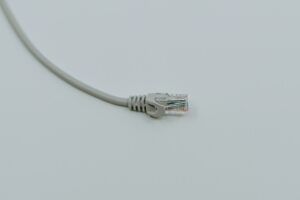There is a solution to the “Application Not Responding” error that occurs in Windows.

There is a solution to the “Application Not Responding” error that occurs in Windows.
Many customers encounter the “Application Not Responding” problem in Windows, which is a regular source of annoyance for them. This happens when an application stops communicating with the system, which often results in the system freezing up, slowing down, or crashing. It is possible that it is caused by a transitory malfunction, but if it occurs often, it may indicate that there are more serious problems with the program or the hardware.
This tutorial will provide you with an explanation of the primary reasons, as well as a step-by-step strategy to repairing and avoiding the issue with Windows 10 and 11.
1. What Causes Applications to become unresponsive
Applications may become unresponsive for a variety of reasons, including the following:
- An insufficient amount of system resources (central processing unit, random access memory, or storage overflow)
- improper installation or corrupted application files are two examples.
- Software that has become obsolete or Windows updates
- Procedures in the background that are clashing
- Problems with the drivers, particularly with the graphics and storage drivers
- Computer viruses or corrupted systems
2. Wait before attempting to force a close.
At times, the software is simply occupied with the processing of a significant assignment. Especially if you are working on files that have not yet been saved, you should wait a few seconds for it to recover before taking any more action.
3. In the second step, go to Task Manager and close the program.
Should the application continue to provide no response:
- Open Task Manager by pressing Ctrl, Shift, and Esc simultaneously.
- Identify the program that is not responding.
- Click the End Task button.
- Perform a restart of the program.
4. Restart Your Personal Computer
Clearing temporary files, memory leaks, and stalled processes that may be affecting the speed of the software may be accomplished by restarting the computer.
Check for Windows Updates.
- Problems with compatibility might arise when system files are out of current.
- Navigate to the Settings menu, then choose Windows Update, and then select Check for updates.
- Restart your computer after installing any updates that are still processing.
5. Reinstall or update the application.
Even if it is only one app that is generating issues:
- To bring it up to date, use the official source.
- If the problems continue, you may remove it from your device by going to Settings > applications > Installed applications and then reinstall the most recent version.
6. Scanning for malware is the sixth step.
In addition to causing harm to program files, malware may use up system resources.
For a comprehensive check of the system, you may use Windows Security or a reliable antivirus program.
7. Freeing up system resources is the seventh step.
Applications may become unresponsive if there are an excessive number of applications running in the background.
- Check how much memory and CPU are being used in Task Manager.
- Unneeded starting applications may be disabled by going to Settings > Apps > starting.
8. Perform an update on the device drivers.
Problems with the drivers, particularly those pertaining to graphics and storage, may cause applications to crash or freeze.
To access the Device Manager, press Windows and X simultaneously.
To update the driver for a device, right-click on the device (for example, the display adapter).
9. Execute the System File Checker (SFC).
An unstable application might be caused by corrupted system files.
Launch the Command Prompt in the Administrator mode.
Put in:
command to copy and edit sfc /scannow
Allow the scan to complete, and then proceed with the instructions.
10. Check for problem with the hardware
If you experience unresponsiveness across numerous applications:
- To diagnose problems with RAM, use the Windows Memory Diagnostic program.
- Storage issues: To verify the health of the disk, use the chkdsk command.
11. Carry out a Clean Boot
Identifying software conflicts is made easier by this.
- After pressing Windows and R, type msconfig and then click Enter.
- Check the box next to Hide all Microsoft services under the Services tab, and then click the Disable all button.
- Please restart your computer and then try the program.
It’s possible that the error “Application Not Responding” is only a minor glitch, or it might be a sign of more serious issues. In order to minimize downtime and ensure that your applications continue to function without any hiccups, you should implement these updates in a methodical manner, which includes restarting, upgrading, and scanning for corruption.






